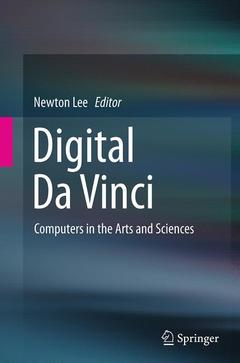Description
Digital Da Vinci, 2014
Computers in the Arts and Sciences
Language: English
Subject for Digital Da Vinci:
Publication date: 09-2016
Support: Print on demand
292 p. · 15.5x23.5 cm · Hardback
Description
/li>Contents
/li>Biography
/li>Comment
/li>
Dennis Anderson is Chair and Professor of Management and Information Technology at St. Francis College. Prior to this appointment he was a Professor of Information Systems & Computer Science and served as Associate Dean at Pace University. He is a strong advocate of technology-enhanced learning, emerging technologies, sustainable technologies, and knowledge entrepreneurship. He also has taught at NYU, City University of New York, and Pace University. Dennis received his Ph.D., M.Phil. and Ed.M. from Columbia University. In addition, he holds an M.S. in Computer Science from NYU's Courant Institute of Mathematical Sciences.
Keith Armstrong has specialized for 18 years in collaborative, hybrid, new media works with an emphasis on innovative performance forms, site-specific electronic arts, networked interactive installations, alternative interfaces, public arts practices and art-science collaborations. His ongoing research focuses on how scientific and philosophical ecologies can both influence and direct the design and conception of networked, interactive media artworks. Keith's artworks have been shown and profiled extensively both in Australia and overseas and he has been the recipient of numerous grants from the public and private sectors. He was formerly an Australia Council New Media Arts Fellow, a doctoral and Postdoctoral New Media Fellow at QUT's Creative Industries Faculty and a lead researcher at the ACID Australasian Cooperative Research Centre for Interaction Design. He is currently a part-time Senior Research Fellow (2 days pw.) at QUT and an actively practicing freelance new media artist.
Stephen Barrass is a researcher and academic at the University of Canberra where he lectures in Digital Design and Media Arts in the Faculty of Artsand Design. He holds a B.E. in Electrical Engineering from the University of New South Wales (1986) and a Ph.D. titled Auditory Information Design from the Australi



